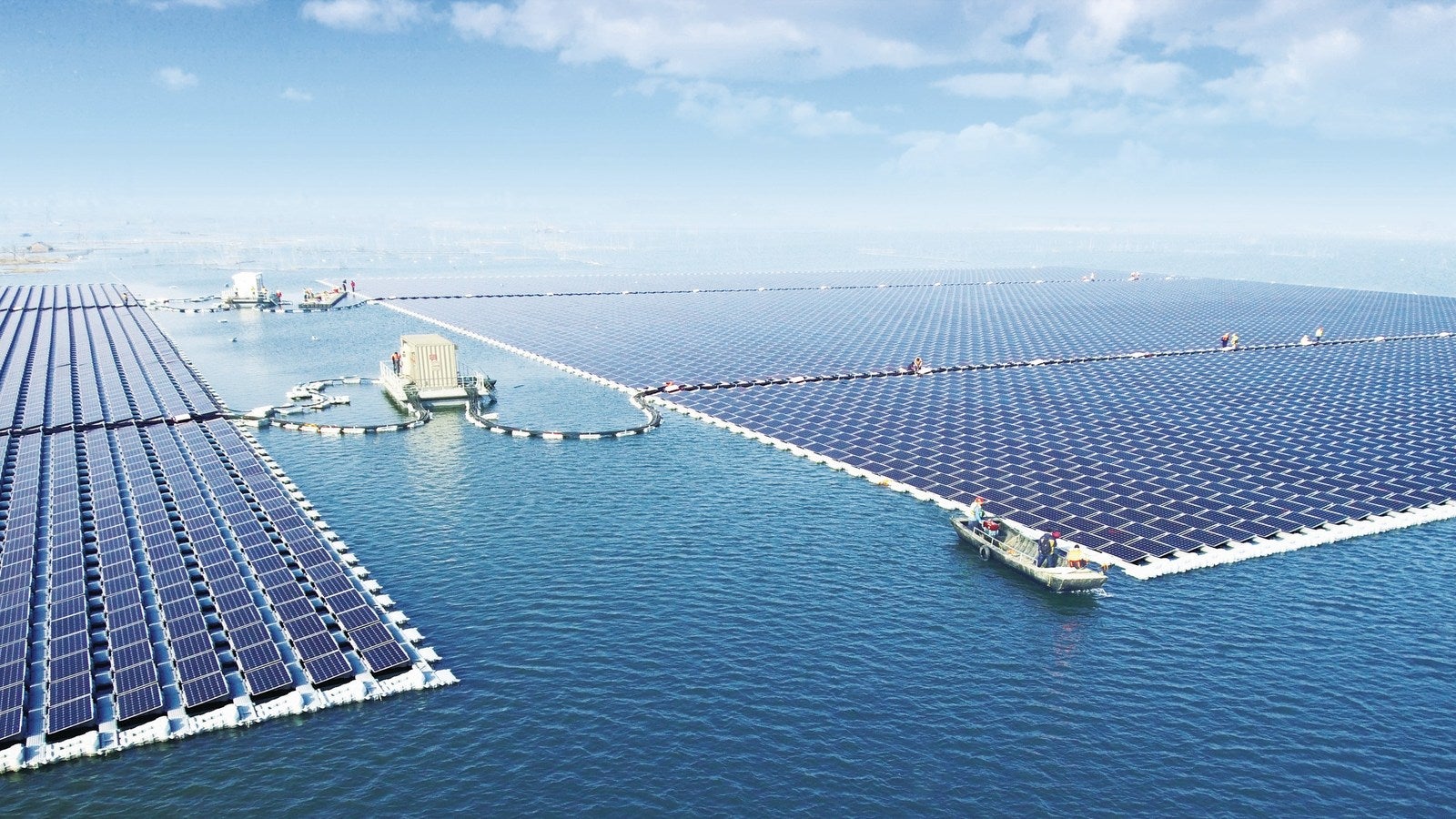The world’s largest floating solar farm is producing energy atop a former coal mine
The Chinese city of Huainan is rich in coal—very rich. By one 2008 estimate, it has nearly a fifth of all of China’s coal reserves.


The Chinese city of Huainan is rich in coal—very rich. By one 2008 estimate, it has nearly a fifth of all of China’s coal reserves.
Now the city has become home to the world’s largest floating solar farm. Appropriately, it has been built atop a former coal mine, which had become a lake after being flooded with groundwater. The China Daily reports that the farm started generating electricity earlier this week.
The 40-megawatt power plant consists of 120,000 solar panels covering an area of more than 160 American football fields. The $45-million investment could help power 15,000 homes. Here’s a drone tour of the solar farm, set to electronic music:
Floating solar farms are not new. But China is taking them to another level altogether. The previous record for the largest such farm was set in the UK by a farm that has the capacity to produce just 6.3 megawatts.
A floating solar farm is more expensive to build than one on land, because it must be designed to withstand salt and humidity from water. But it has advantages: It can be built on otherwise unused surface. It works more efficiently, because the presence of water cools the panels as they generate electricity. It can mitigate evaporation of water, keeping the lake full for longer.
The “pleasing symbolism” of building the solar farm on a flooded coal mine, as the World Economic Forum put it, is also practical. China, the world’s biggest investor in wind and solar energy, looks committed to creating space for renewable energy projects. In a recent visit to a newly built Chinese coal-fired power station, I was greeted at the entrance with a hillock covered in solar panels. “We want to make sure we’re using free space effectively,” the plant manager said.
In a bid to clean up its smog-filled skies, China has also announced closures of coal-fired power plants and suspension of plans to build new ones.